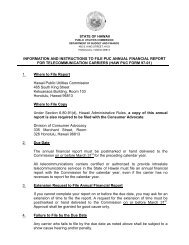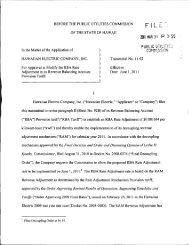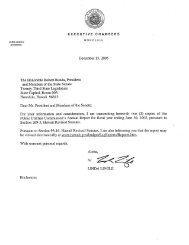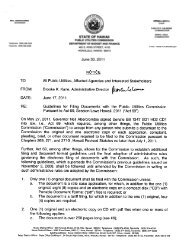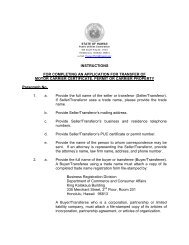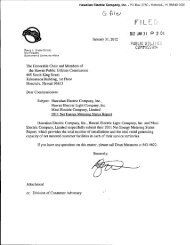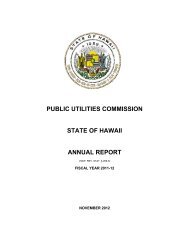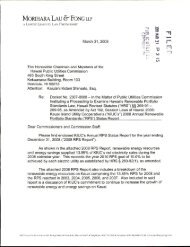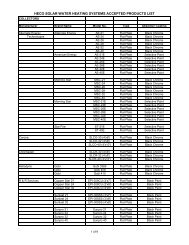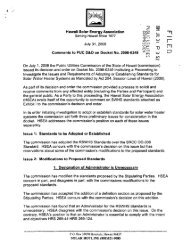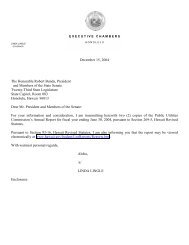HECO's Response to Consumer Advocate's Comments, 4/29/11
HECO's Response to Consumer Advocate's Comments, 4/29/11
HECO's Response to Consumer Advocate's Comments, 4/29/11
Create successful ePaper yourself
Turn your PDF publications into a flip-book with our unique Google optimized e-Paper software.
EXHIBIT 1PAGE 18 OF 19In addition, the <strong>Consumer</strong> Advocate’s strained interpretation of the RAM could alsonullify recovery of RAM revenues relating the calendar year prior <strong>to</strong> a rate case test year. Aninterim order can be issued sooner than 10 or <strong>11</strong> months after the filing of a rate caseapplication. 7a test year. 8An interim order can and has in prior rate cases take effect as early as January 1 st ofIn the latter case, the <strong>Consumer</strong> Advocates’ proposed implementation of the RAMwould require that it be discontinued as of January 1 st , when the Company would have collected,at most, 7/12ths of the RAM revenues for the prior calendar year (and less than that if theimplementation date of the RAM was suspended until after June 1 st of the prior year).Retroactive RatemakingThe <strong>Consumer</strong> Advocate attempts <strong>to</strong> mischaracterize the Company’s position assomehow resulting in “retroactive” recovery of RAM Revenues. See <strong>Consumer</strong> Advocate<strong>Comments</strong> at 16, 17, 22. Clearly, that is not the case. The RAM Revenue accrual period followsthe effective date of decoupling. If an interim rate case order is allowed <strong>to</strong> nullify the right <strong>to</strong>collect accrued revenues (i.e., if it is given retroactive effect), then that would be retroactiveratemaking.Purpose of Including a Revenue Adjustment MechanismThe Company’s position also is consistent with the purpose of including a revenueadjustment mechanism in a decoupling mechanism. In the Joint Proposal on Decoupling andStatement of Position of the HECO Companies and <strong>Consumer</strong> Advocate (March 30, 2009), theJoint Parties stated that “[t]he purpose of the Revenue Adjustment Mechanism is <strong>to</strong> adjust7 For example, in Hawaiian Electric’s 1992 test year rate case, Docket No. 6998, the Commission authorized theinterim increase after eight months. (Interim Decision and Order No. <strong>11</strong>559 was issued March 31, 1992, andHawaiian Electric’s application was filed July <strong>29</strong>, 1991.)8 In Hawaiian Electric’s 1995 test year rate case, Docket No. 7766, the Commission issued Interim Decision andOrder No. 13716 on December 30, 1994, allowing an interim rate increase <strong>to</strong> become effective on January 1, 1995.3357864.1



